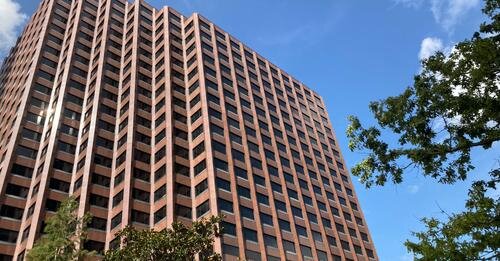By: Andrew Valenti, Reporter October 6, 2021 - c/o New Orleans CityBusiness
As 2021 began and the COVID-19 pandemic continued, there were fewer tenants at some New Orleans-area office buildings.
A recent report from Corporate Realty shows occupancy dropped at the Central Business District’s 14 Class A office towers, from roughly 85% in the fourth quarter of 2020 to 84% in the first quarter of this year. That put around 133,000 square feet of space back on the market at the buildings, which are typically more modern and have higher rental rates. Second and third-quarter reports were not yet available as of September.
In 2019, occupancy was at 87% in downtown New Orleans, where there is a total of 8.9 million square feet of Class A office space and 818,000 square feet of Class B space.
Occupancy has been more stable at the three Class B buildings downtown, holding steady at roughly 78% from the fourth quarter of 2020 to the first quarter of this year.
At Metairie’s five Class A towers, occupancy dipped from about 87% in the fourth quarter of 2020 to 86% this year. Occupancy in the area’s 13 Class B buildings remained virtually unchanged at 87%.
Much of the loss in the downtown New Orleans high-rise space can be attributed to a drop in occupancy at 1515 Poydras St., from 52% in the fourth quarter of last year to 38% this year, which put 74,000 square feet of space back on the market. In 2019, the tower’s occupancy was 59%.
Officials at the 27-story building announced in August they plan to convert the 529,000-square-foot structure into a mix of rentable apartments, condos for sale, offices and retail. The multifamily aspect would occupy the 14th to 27th floors, or roughly 60% of the building. The ground floor would consist of retail, and the remainder of the square footage would remain as office space.
The downtown market saw one of its biggest losses in 2020, when General Electric shuttered its space in Place St. Charles as part of a $2 billion cost-cutting measure.
Real estate experts have said it’s not yet certain how the pandemic may affect the market’s future. Some companies have returned full-time to the office, while others have continued remote work or a hybrid model.
The market has seen some smaller lease renewals and new leases within the past year. LCMC Health inked a deal for 41,000 square feet in the Energy Centre on Poydras Street for its corporate offices on the 24th and 25th floors as well as a ground-floor clinic.
Gaines Seaman, a senior advisor with Stirling Properties who handles leasing at the Pan American Life Center at 601 Poydras St. and other large office leases in the metro area, said he has seen a 2% dip in occupancy in the downtown Class A office buildings since the pandemic began.
While its long-term effects have yet to be realized, Seaman believes that as leases mature, more tenants will reduce space.
“However, with that said, many tenants still feel the office is most productive for communication, collaboration and training,” he said.
Seaman said many tenants were initially hesitant to commit to longer-term leases while they were trying to grasp the effects of COVID-19 and how their businesses would function moving forward.
A standard office lease before the pandemic was about 10 years. Seaman said landlords are now having to offer more improvement dollars to keep tenants, especially those who are retrofitting spaces due to how COVID has affected the way they work. He said rental rates have dipped some but that will be short-lived.
SVN | Urban Properties head of brokerage Tim Thompson said he has seen an increase in non-downtown Class A office space. SVN | Urban Properties handled leasing at The Stables, a recently redeveloped group of four low-rise buildings in the Lower Garden District. The developer, Inhab Group, expects to complete the fourth and final phase of the project sometime next year.
Thompson said the firm filled the development “quicker than anticipated,” with some of its tenants leaving downtown for places that have free and ample parking and shorter commute times. The Stables offers more than 30 complimentary off-street parking spots.
“People don’t seem to want the traditional downtown space,” he said.
Law firm Forrest, Cressy & James moved to The Stables from a CBD office tower in November 2019. Eliza James, a partner at the firm, said the firm wanted a space that had a modern and hip aesthetic, is easily accessible to clients and conducive to having collaborative work areas for attorneys and staff. An added bonus, she said, is the on-site space that can be used to host events.
“The Stables provides all these things with the unique New Orleans charm of a meticulously restored building,” James said.
The local office market is feeling less of an effect from Hurricane Ida’s landfall nearly six weeks ago.
The Category 4 storm did not have the same impact on the area’s high-rise buildings as Hurricane Katrina in 2005, where damaging winds and flying debris shattered windows on multiple structures.
While the Galleria in Metairie sustained some damage in Ida, Corporate Realty president Mike Siegel said downtown New Orleans office buildings remained virtually unscathed. All downtown properties where Corporate Realty handles leasing reopened by Labor Day, Siegel said.
“This was not another Katrina event,” he said.
But Siegel said the storm added more headaches for building owners and tenants who have ongoing concerns surrounding the pandemic.
“What people don’t like is uncertainty,” he said. “This just adds to it.”




